The experience of the earthquake disaster and nuclear accident overturned all our trust in society. By “trust” I mean “calculability” or “controllability.” Not only capitalism and radioactivity but also our lives and relationships are uncontrollable… We realized that we are passive existences from birth. From subjective activity to objective passivity. From calculated construction to indefinite development. How can we, born alone and passively, connect to others and get along to survive? How can we develop community in the uncertain society where catastrophe remains latent? I selected performances that should respond to these questions about passivity toward “life” and “relationship,” and on this premise, the direction that “life” takes, “division” and “community.”
TPAM Direction
Young directors, whose activities are unique, are appointed by TPAM as the directors of this program. They freely propose concepts and new points of view in their directions, through which we can share contemporary ideas and issues to contemplate on the possibilities of performing arts.
Masashi Nomura
(Producer, Komaba Agora Theater)
Born in Nagano in 1978. After working at a public hall, he joined Komaba Agora Theater and Seinendan. Meanwhile, he took part in activities of young artists in various ways. Our Planet (2009) by mamagoto and The Treasured Son (2010) by Sample, for which he worked as dramaturge, won the Kishida Kunio Drama Award. He has also produced black coffee (not for drink) by Okazaki Art Theatre (2013) and Time by Shuta Hasunuma and Ryota Yamada (TPAM2012).

Shuta Hasunuma
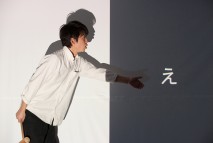
HANCHU-YUEI
Where does “dance” emerge from? What is its basis? When does it begin and end? For whom does it exist? What kind of forms does it show or does not show? In this direction I would like to focus on the three following points of view. Firstly, “dance” is expression that is generated in close relation to local contexts: climate, location, history, education, religion, family life, etc. Secondly, it goes back and forth between “necessity in daily life,” “what loosely connects people, roots and community” and “act of showing something at some kind of venue.” Thirdly, “dance” is expression with a structure that is open to endless processes, where it transforms again and again as daily life continues endlessly.
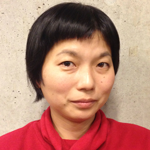 Fumi Yokobori
Fumi Yokobori
(Program Director, NPO DANCE BOX)
Born in Nara in 1978. She has been engaging in DANCE BOX since 1999. A trainee under the study program for upcoming artists of the Agency for Cultural Affairs in 2006. Researched the situation of performing arts in six Asian countries and New York as a fellow of the Asian Cultural Council from 2008 to 2009. Based at Art Theater dB Kobe, she has been experimenting on programs that connect “dance,” “local communities” and “theater” and aiming to build network with a focus on Asia.

Jun Tsutsui + Dancing People in Shin-Nagata
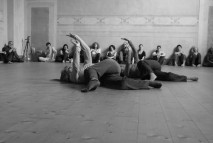
Sioned Huws
I tried to do what I thought was impossible at ST Spot in the past two TPAM Direction programs of mine, but this time I would like to reconsider what is possible at my home ground. ST Spot is a tiny “theatre” with the minimum space and facilities. Artists have to thoroughly look into themselves and learn how to control and make use of the space in order to set off for a journey to the world of their pieces. They sometimes return to the space and confirm where they stand. This circulation becomes mental food, a place for training and the value of the space for the artists. We witness that process everyday and watch the changes that occur every moment, without too much intervention, but not ignoring either, basically affirming everything as it is, because it is impossible to judge the values instantly. However, we try to present a direction in programming as much as we can. I think the judgements are not based on experience or information; they involve both intuitions and what betrays the intuitions.
 Katsuhiro Ohira
Katsuhiro Ohira
(Director, ST Spot)
Born in Osaka in 1971. After working as a reader and lecturer at a university and professional school, he started to work at ST Spot in 2006 and engaged in the establishment of Steep Slope Studio. The director of ST Spot since 2008, he has been programming with a focus on contemporary dance and organizing training programs for young artists and workshops for audience development. Recently he has also been working on international exchange projects including artist-in-residence.
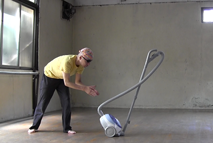
Kim Itoh × Zan Yamashita
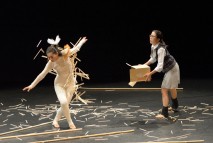
Yukina Sakai × Momoko Shiraga
In 2013, “play” that I encountered was in “daily life.” “Story” and “play” lie in the fact that people live there. It was a visit to and life on Shodo Island — I went there to participate in Setouchi Triennale — that reminded me of the simple truth. Light, sound, the sea, winds, ports, islands, people, space and time. Encounters with plays are often in “quotidian” moments: embarrassment at taking a picture with a friend that you meet for the first time in a long time, excitement at wearing your favorite clothes for a date, or finding a word flowing in Twitter comforting on a crowded train. These emotions are all coming from having a “relationship” with the world. In 2014, the “play” that I want to encounter is in “relationship.” This time I would like to produce a “play” that is born from “relationship” through photography, clothes and words.
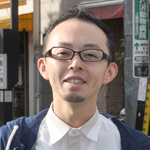 Takuo Miyanaga
Takuo Miyanaga
(Presenter / Producer)
Born in Tokyo in 1981. The representative of “ZuQnz,” a planning and producing unit. He was involved in the production of performances and related projects of Seinendan from 2007 to 2011, and founded a theatre company “mamagoto” with Yukio Shiba in 2009 as its executive producer. Other works that he has engaged in include the producing of “toi,” a unit with Miyuki Kurokawa (InnocentSphere) and live performances of a music unit “kuchiroro.”






